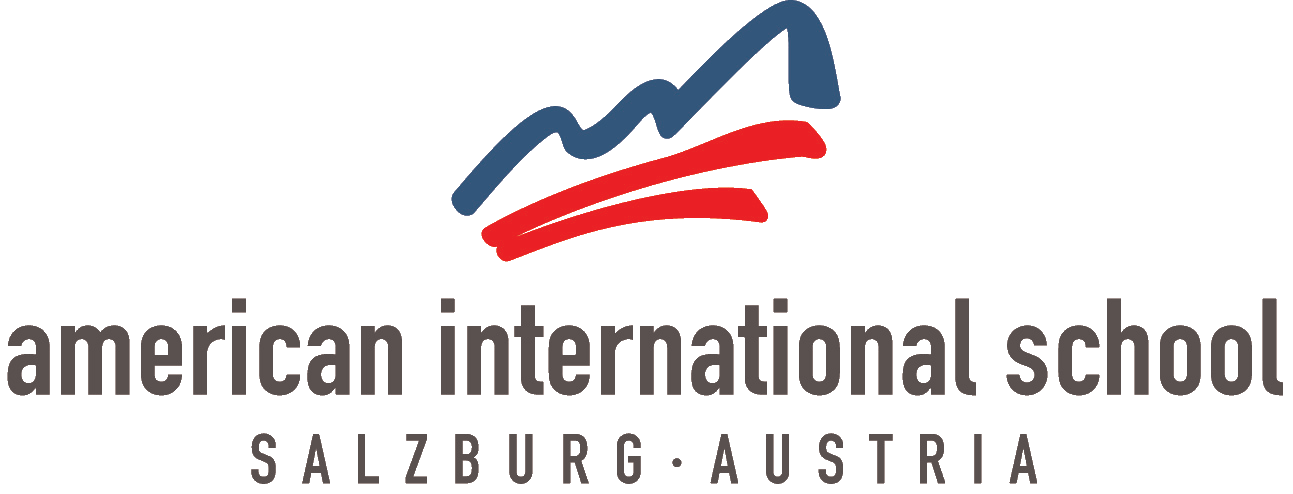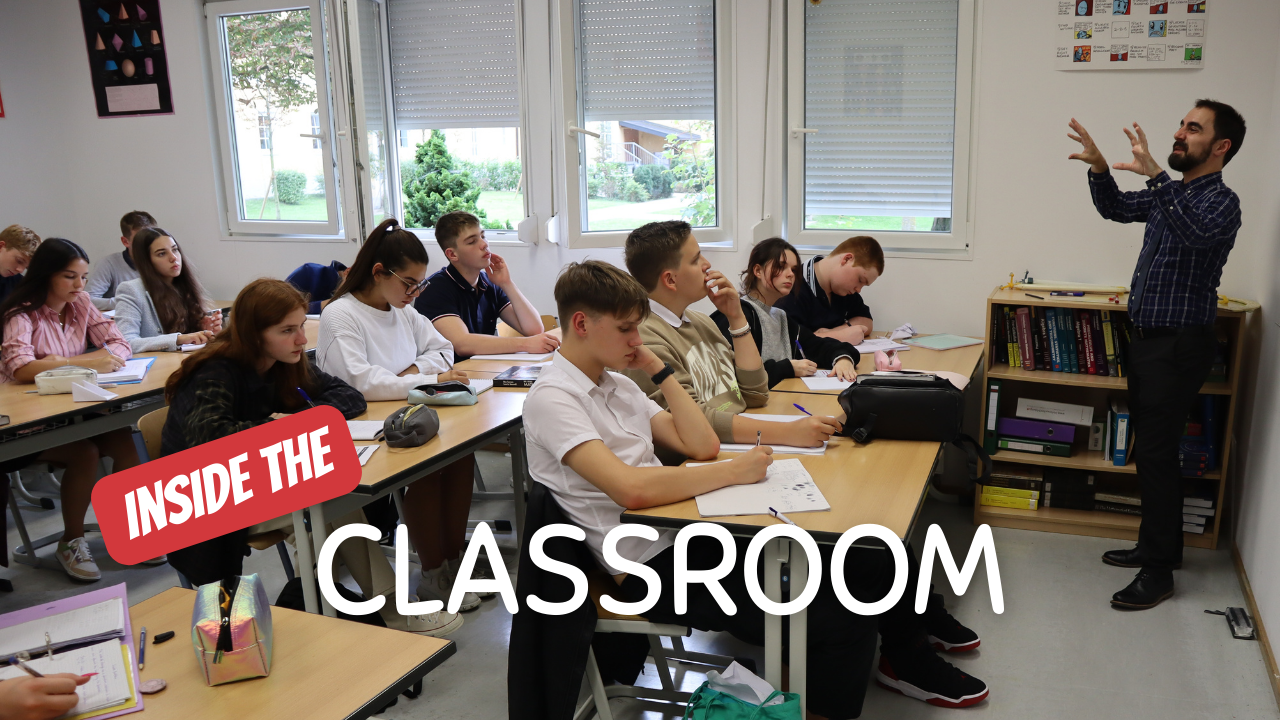
Inside The Classroom: Trimester 1 Features
November 25, 2022
English 10 Composition and Literature
In English 10 Composition and Literature class with Ms. Anderson, students had the option to illustrate the most important scene in The Crucible by Arthur Miller. Egla H. chose to illustrate a scene (spoken of but never shown in the play) of the Salem girls dancing in the forest. Abby’s face has a smear of blood: a sign of the murderous witchcraft she has just conjured. Stefaniia H. illustrated one of the last scenes in the play, in which John and Elizabeth Proctor bid each other farewell. We invite you to view the work of both Egla and Stefaniia below.
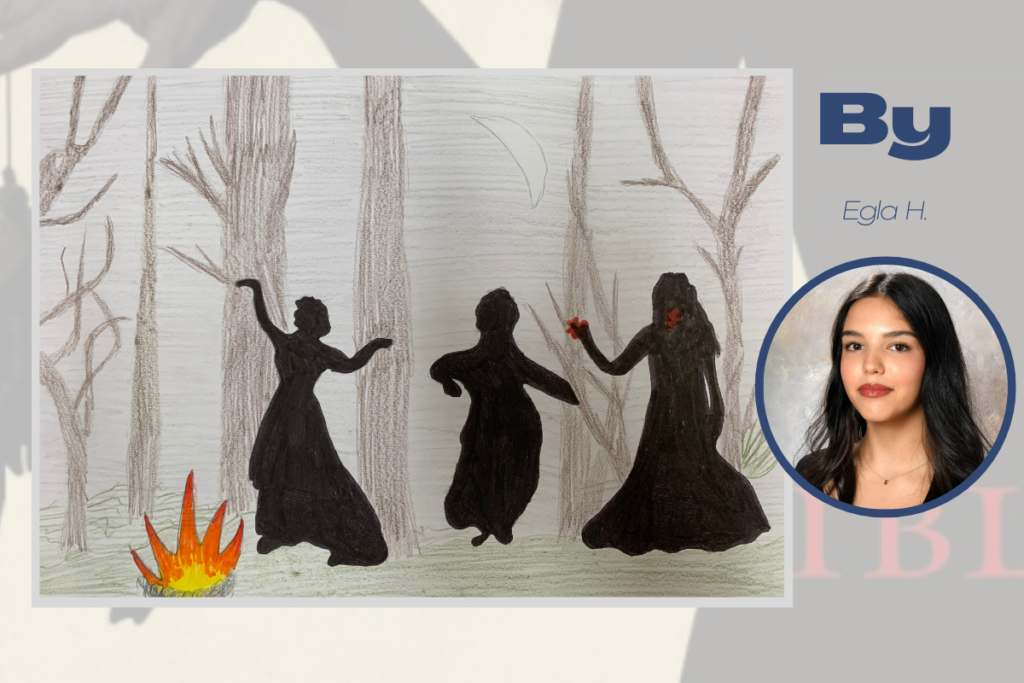
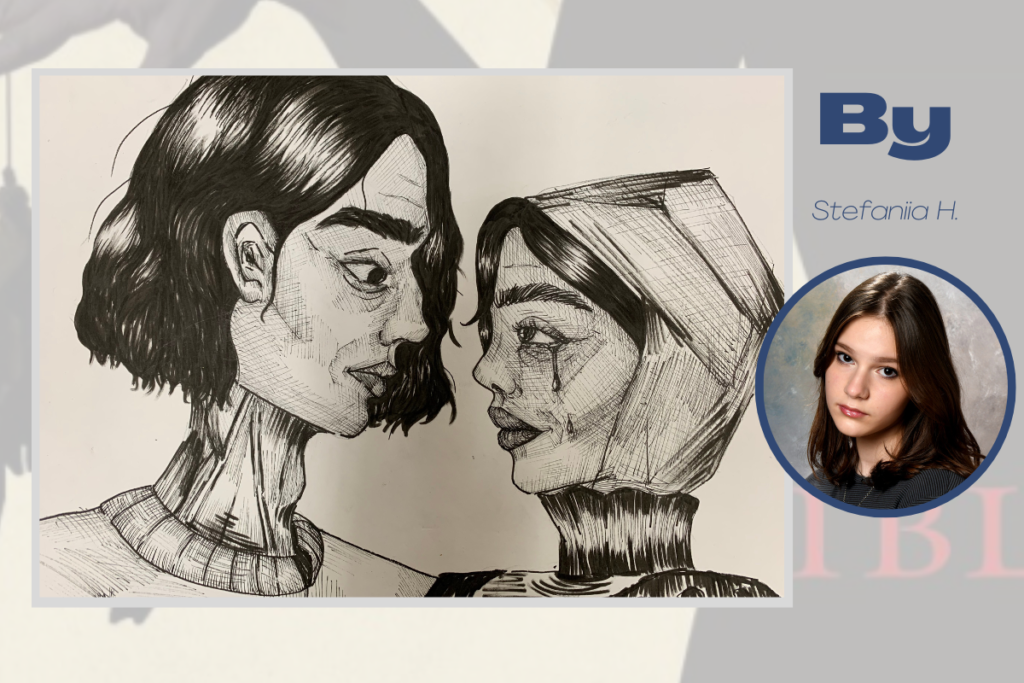
In the other class section of English 10 Composition and Literature, taught by Mr. Anderson (no relation), students were assigned a ‘One-pager.’ This requires that they provide a visual interpretation of the most significant scenes, symbols or statements from the text.
Below are ‘One-Pager’ projects submitted by Evdokia M., Viktoriia P., and Milan W.
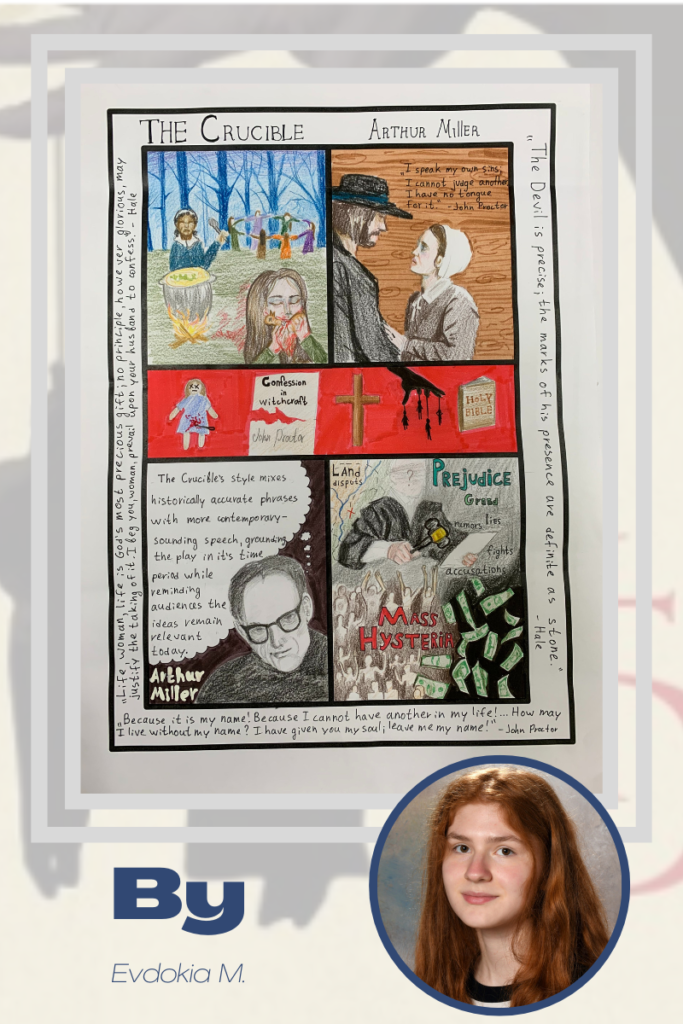
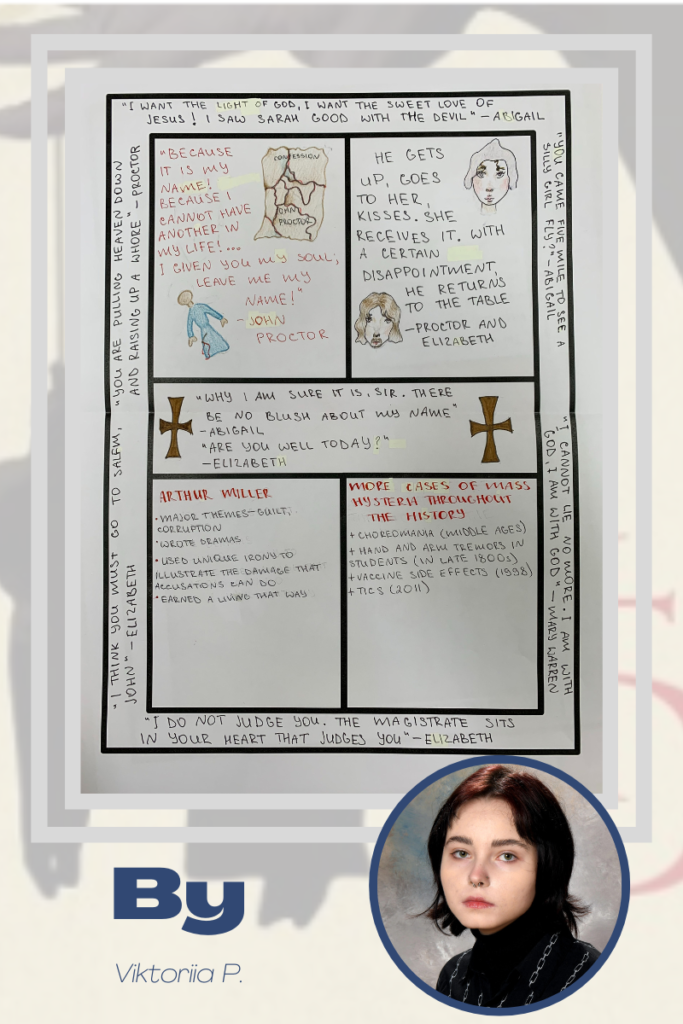
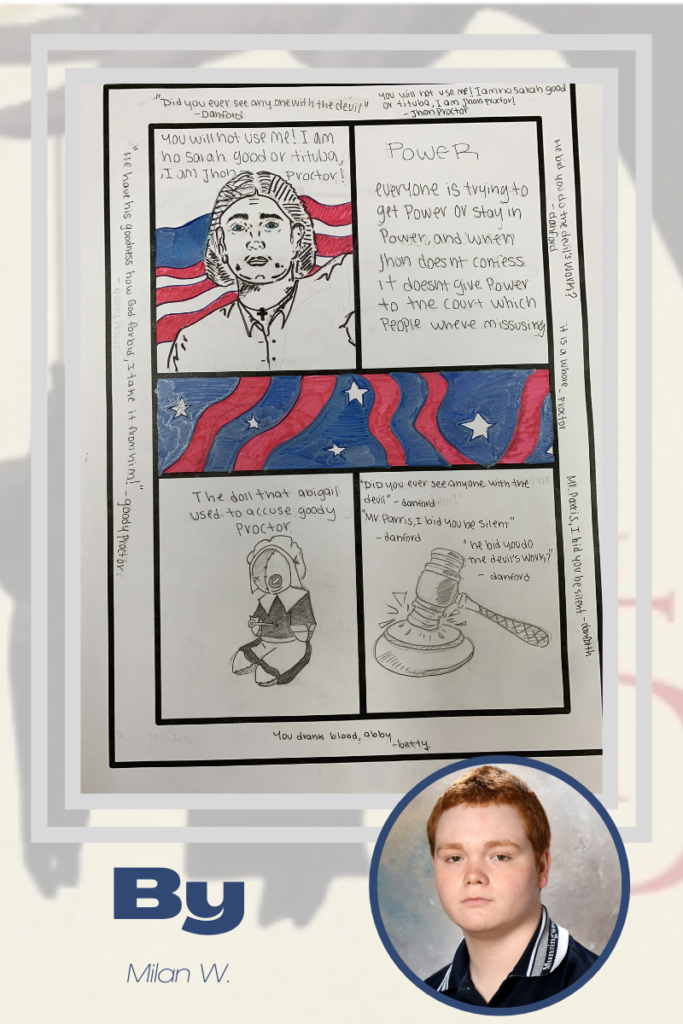
Soundbites from 10th-Grade Math
We invite you to watch the video below, where 10th-grade math students prepare to write a test on solving systems of equations. Real-life situations can rarely be distilled down to ‘solve for x.’ Systems of equations give us tools to simultaneously solve for many different variables in complex situations.
Precalculus & Grade 10 Chemistry
In the photos below, precalculus students learned about the topic, ‘optimization’. The task was to cut squares from each corner of the paper and fold up the flaps to create a box with the largest possible volume. A variety of optimization problems can be found in all quantitative disciplines, from computer science and engineering to operations research and economics.
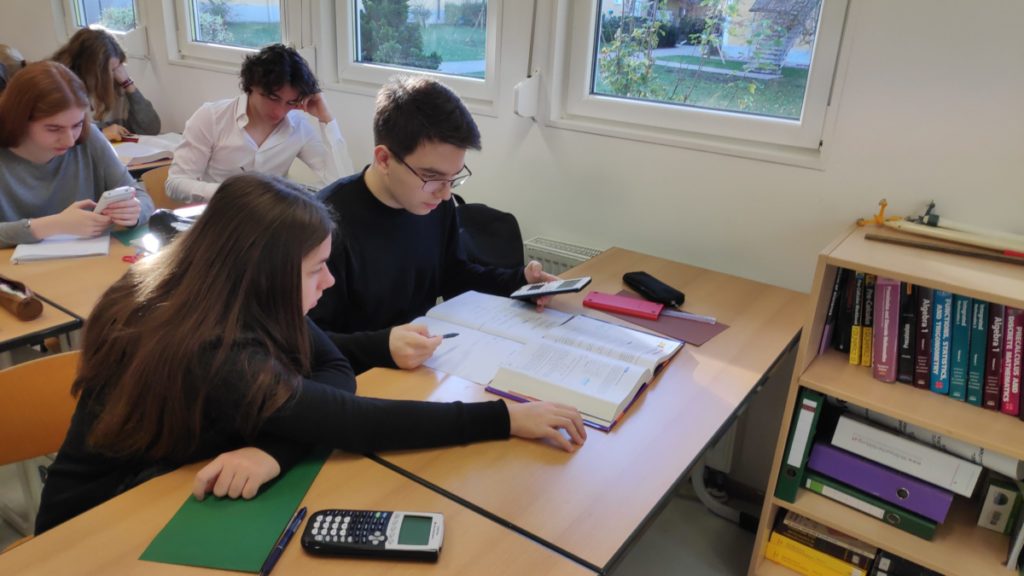
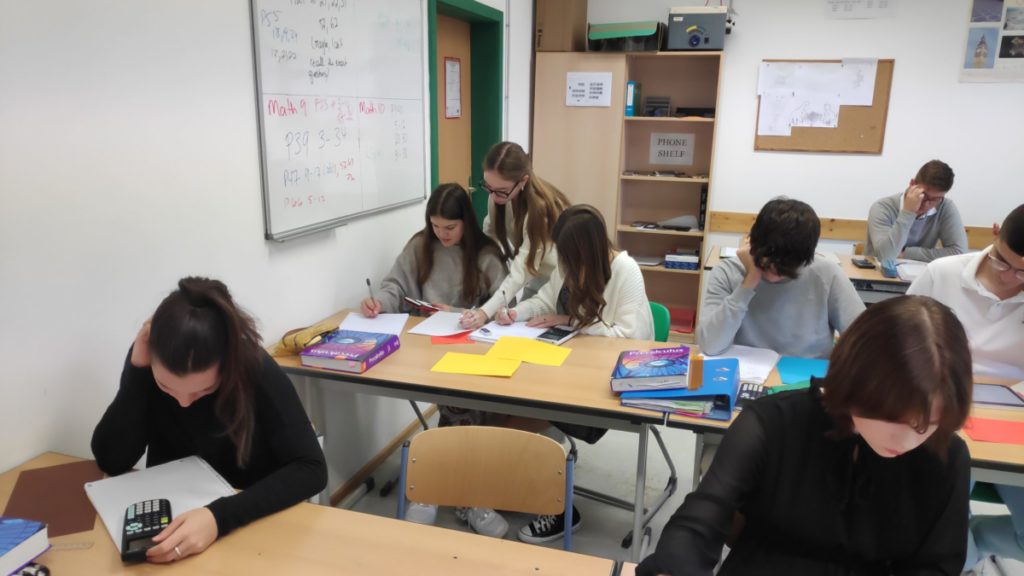

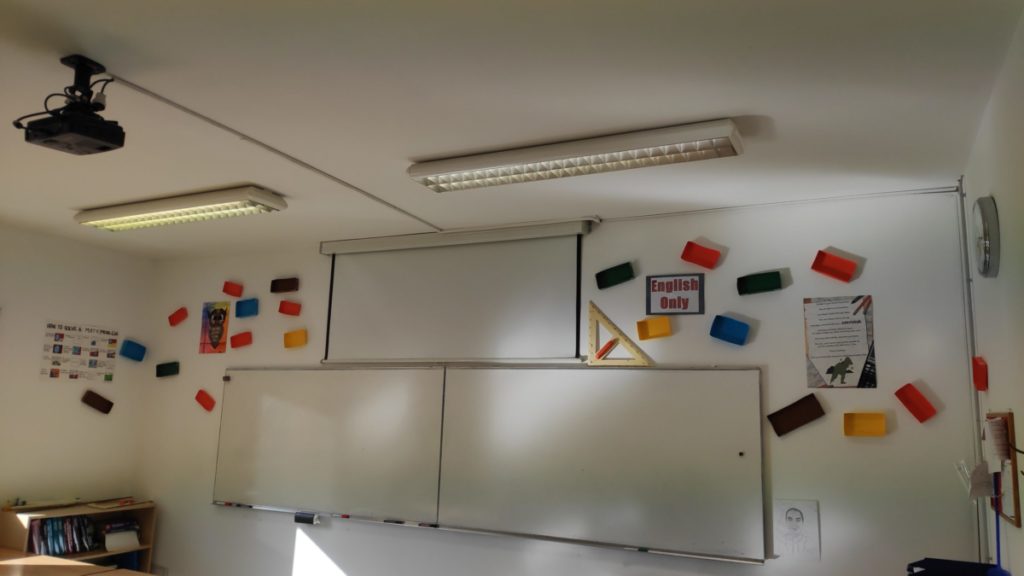
Wilhelm Ostwald coined the name “mole” in German in 1893, and it’s assumed it was derived from the word Molekül (molecule). Ironically, Ostwald’s development of the mole concept was directly related to his philosophical opposition to atomic theory, which he disagreed with for most of his career. We can also define the mole using Avagadro’s constant. We invite you to watch the video below of a recent lab in grade 10 chemistry where students weighed out different masses and solved the relationship of grams, moles, and atoms.
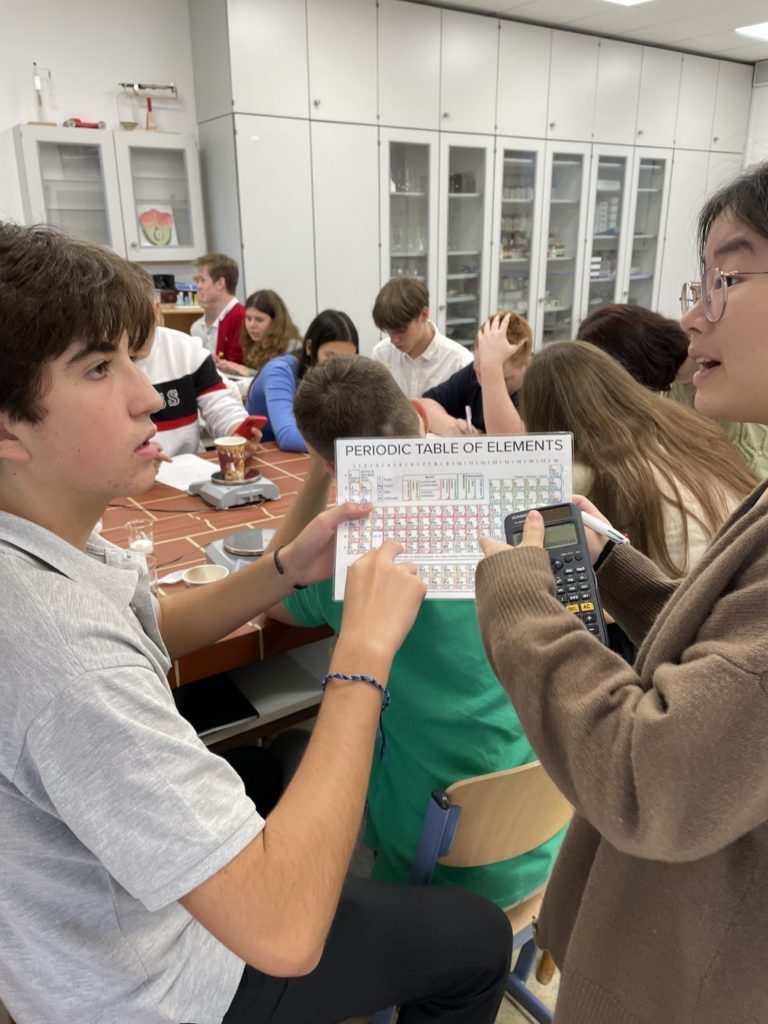
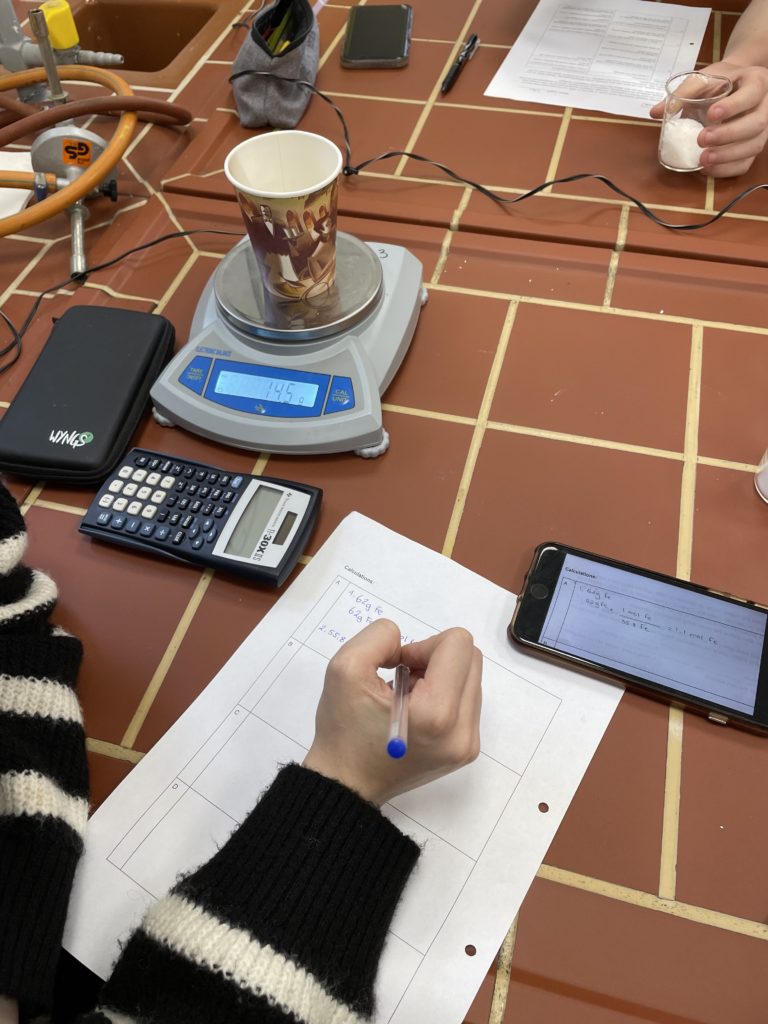
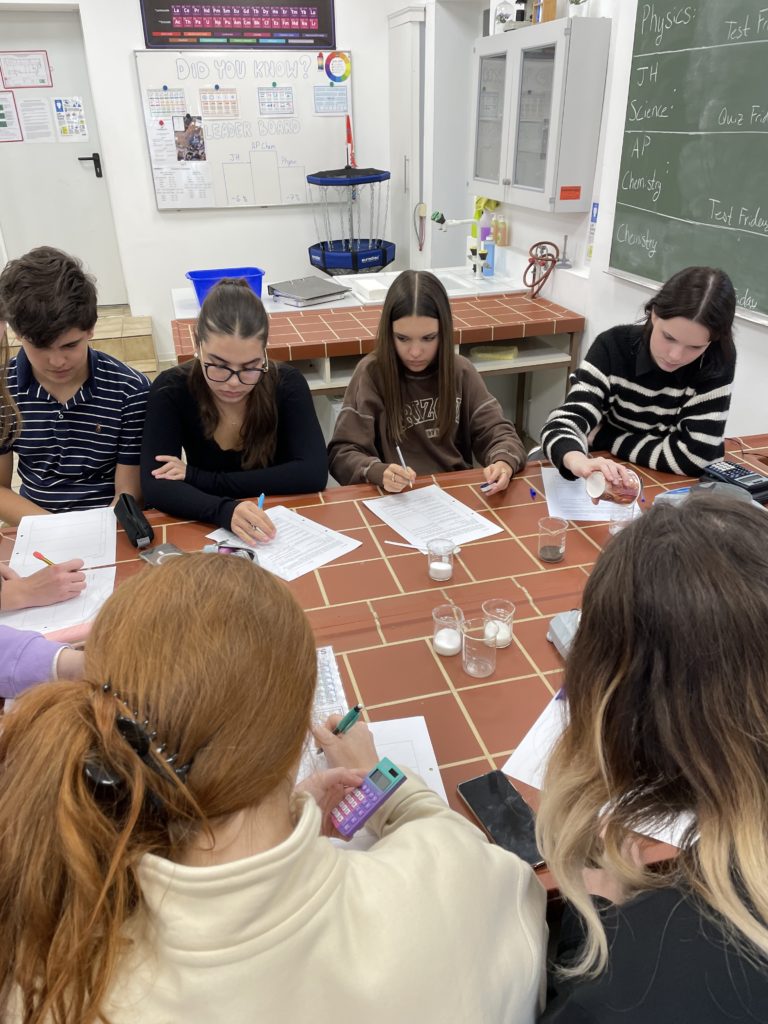
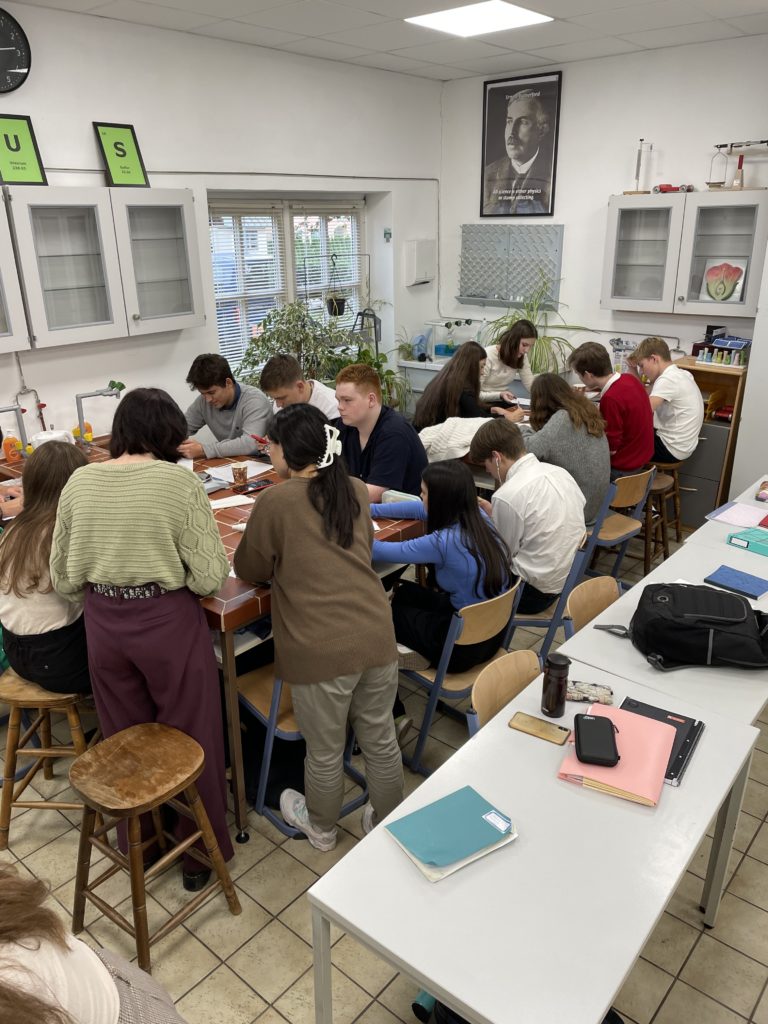
School Day Soundbites: U.S. History with Mr. McLean
We invite you to watch the sneak peek video below of the second-period US History class with Mr. McLean as he explains the cultural dynamics of animistic, polytheistic and monotheistic religious practices and their role in the conflict between the Europeans and the natives of North America.
Projects Feature from German 1 and Advanced Math
In German 1, students created videos with their own scripted dialogue using proper grammar and vocabulary learned in the first four chapters of their textbook. The theme of the video was for two or more people to meet and discuss their hobbies, families, likes, and dislikes. Students were graded on 11 specific components outlined by their instructor, Ms. Baehler. For example, one component was for students to properly use the verbs sein, haben, sprechen, essen, möchten, and brauchen at least twice.
We invite you to watch the compilation video below of some of the completed videos.
In Advanced Mathematics, students created a basic model of a house for the year 2075 that reflects the projected shift in population growth, urbanization, energy efficiency, and future design trends. Students then presented their “Houses of the Future” providing evidence from their research and why their house will be necessary for the future.
We invite you to view the presentation of Dany G’s ‘House of the Future.
Soundbites from U.S. History with Mr. McLean
We invite you to watch the sneak peek video below of the second-period US History class with Mr. McLean as he explains the cultural dynamics of animistic, polytheistic and monotheistic religious practices and their role in the conflict between the Europeans and the natives of North America.
Theater Arts with Mrs. Silke Stein
Theater Arts …. the stage is yours!
In this seventh-period class for 7th and 8th graders, the students learn to expand their knowledge and experience by improvising, playing theatre games, and singing their favorite songs. With this, students learn everything to be creative and confident—not only on stage but also later in life.
Creative minds create a great future!
We invite you to watch the video below from a recent Theater Arts class with Mrs. Silke Stein. In her class, Silke teaches breathing and speaking techniques, and basic musical and acting skills. Through these skills, her students gain confidence and a strong foundation for their talents and strengths to continue growing on beyond her classroom.
More About the Instructor
Music and performance have been a part of Silke’s life ever since she was a child.
At a very young age, Silke trained in classical piano, ballet and singing. As she grew, she was fortunate enough to transfer these skills to various theatre stages and later to the television screen, where she worked as a presenter and producer of different TV shows. It was there that she was able to develop journalistic skills such as researching and writing.
11 years ago, backstage during an intermission at a theater production where Silke performed as an actor, she was told that she by an elementary school teacher that she was “great with kids”. This encounter inspired Silke who started to work as a musical coach. Since then, Silke has been working with young people, ages 6 to 18 and loves showing them everything they need to know to be confident on stage.
Silke writes and composes musicals according to the wishes of her students. Teaching in a lot of Salzburg´s schools and theaters, Silke has written and performed more than 50 individual musicals.
